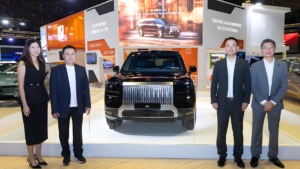How technology can make Americans feel safer at home
A lot of us probably were used to leaving home for the day and not worrying constantly about theft and break-ins—that is until the COVID-19 pandemic. In response to stay-at-home orders, many...

A lot of us probably were used to leaving home for the day and not worrying constantly about theft and break-ins—that is until the COVID-19 pandemic.
Table Of Content
In response to stay-at-home orders, many businesses and schools have spent months relying on Zoom. Since remote work keeps us indoors more than ever, home security has entered many of our minds. Is my living situation safe enough? Could someone break in at any given moment? Are there ways to make my place more secure? All these new thoughts and fears have come to the forefront as we’ve spent the past year in lockdown.
To get a better idea of people’s views and practices regarding home safety, we’ve looked closely at data from a recent survey on American home security. Keep reading to learn about the findings, as well as how technology fits into the picture.
American home security methods
When it comes to home security, Americans tend to use the same handful of strategies. Here are the methods they use:
- Front door locks: Among those surveyed, 55% only rely on front door locks to keep their spaces safe.
- Doorbell cameras: Doorbell cameras come in at the second most popular method, with 31% of Americans using them.
- Gated homes or communities: Although more Americans prefer technology-based home security, others still choose different methods. 9% live in gated homes or communities in order to feel safer.
- Doorman or front desk: Rather than installing doorbell cameras or choosing gated living situations, 5% of Americans rely on a doorman guarding a building’s entrance or a person working at the front desk to make them feel safer.
Technology and home security
Based on the data, a majority of Americans only use front door locks as their main home security method. Although locks are better than nothing, 4 out of every 5 Americans would feel more comfortable with better home security.
If the goal is to make homes safe, door camera technology can have advantages. Of those who don’t already use the technology, 82% state they would feel more comfortable if they had a doorbell camera installed. This preference aligns with larger technological trends, as a growing number of Americans are choosing to install smart home devices.
In addition to making homes safer for those who live there, doorbell cameras also protect package deliveries. In 2020 alone, 43% of people experienced package theft from their home. As a result, 35% of Americans report using doorbell cameras to reduce the risk of package robbery.
If you’re wondering whether new home security technology is appealing for all ages, it turns out that doorbell cameras are universally favored. Although Baby Boomers and Millennials have different views about the gated community versus doorman debate, both generations have more confidence in doorbell cameras. In fact, 74% of Millennials and 83% of Baby Boomers think doorbell cameras are effective at decreasing theft.
Other theft prevention methods
Even though doorbell cameras are preferred by many, Rent.com compiled additional ways you can avoid package theft:
- Track your packages: Making sure you receive tracking notifications for your deliveries can be a free, reliable way to ensure that you’re home when your package arrives.
- Use a smart locker: No matter when your packages arrive, smart lockers store and keep deliveries safe.
- Ask neighbors for help: If you know you won’t be home when your delivery comes, ask a trusted neighbor to pick it up for you.
- Request package holds: Many mail carriers will hold packages for one to two weeks upon request.
- Get a PO box: For those who aren’t usually around for deliveries or can’t safely store packages at their front door, investing in a small PO box at a nearby location can be an ideal solution.
While most Americans still only use door locks, other home security methods are on the rise. In particular, smart technology is already on the minds of one-third of Americans opting for doorbell cameras. This trend indicates that technology is steadily integrating into more aspects of our lives than ever—and perhaps for good reason.
With the added comfortability provided by doorbell cameras, Americans can feel safer in their homes. During the pandemic and beyond, technology could be the solution to your home security concerns.














